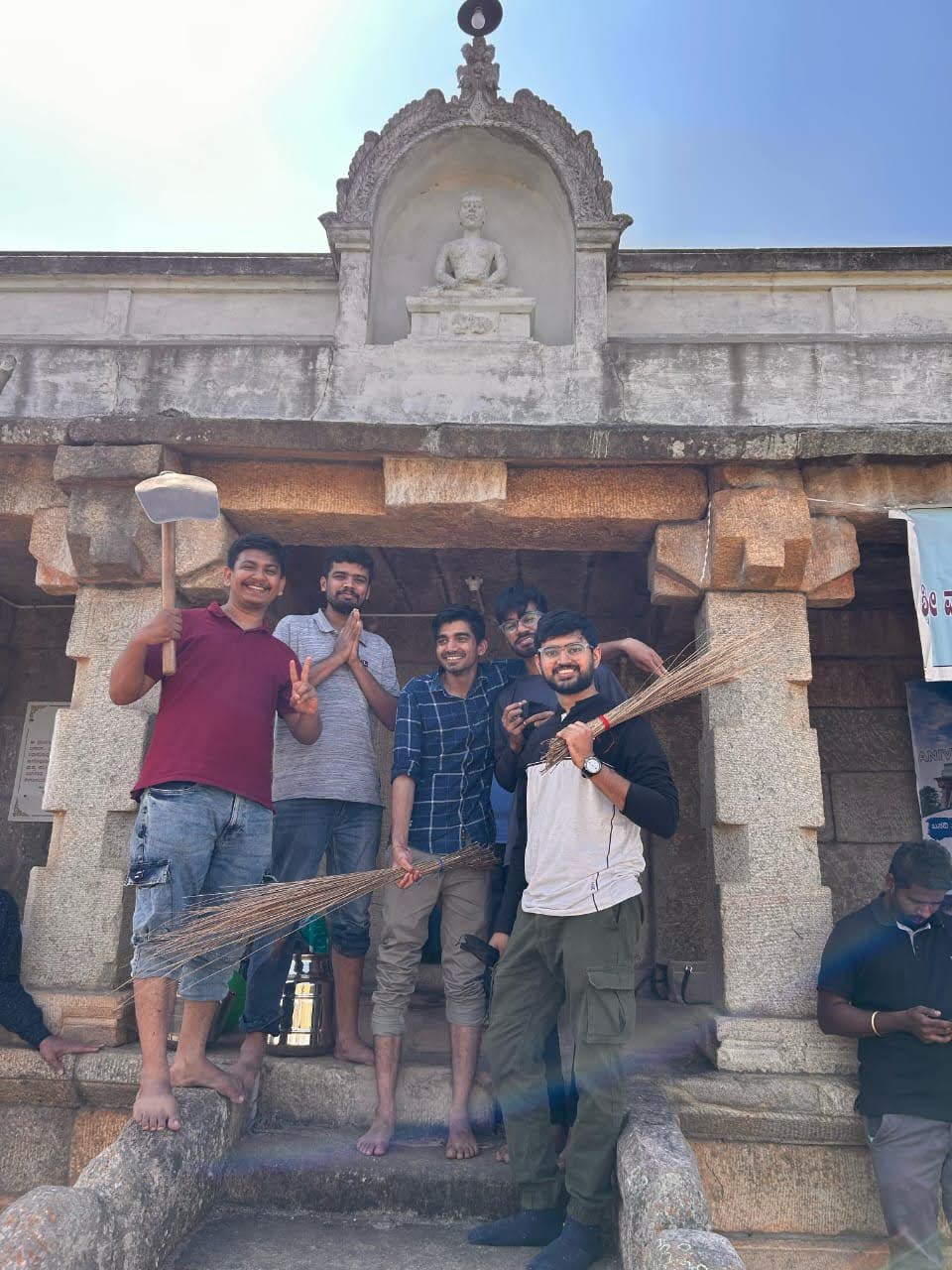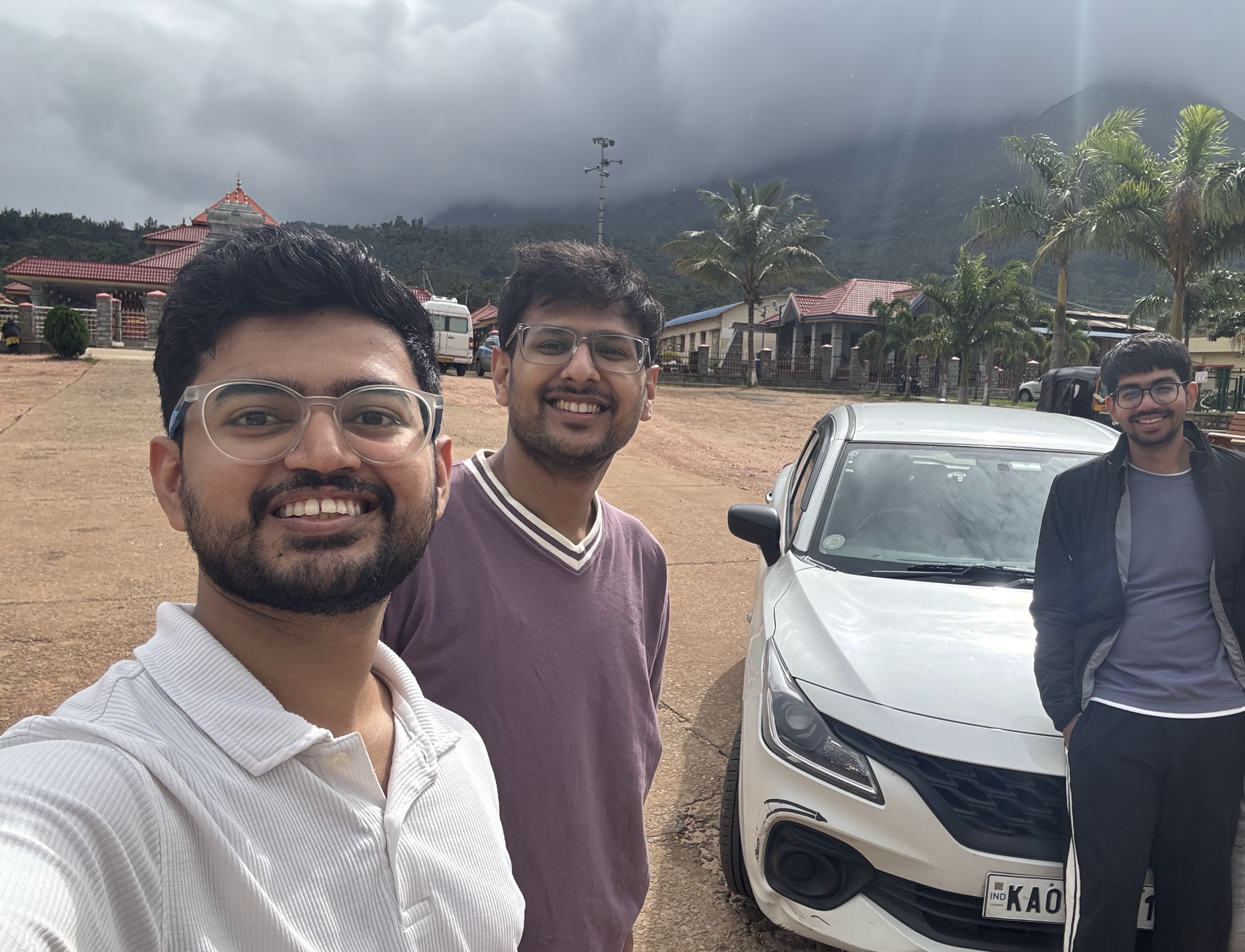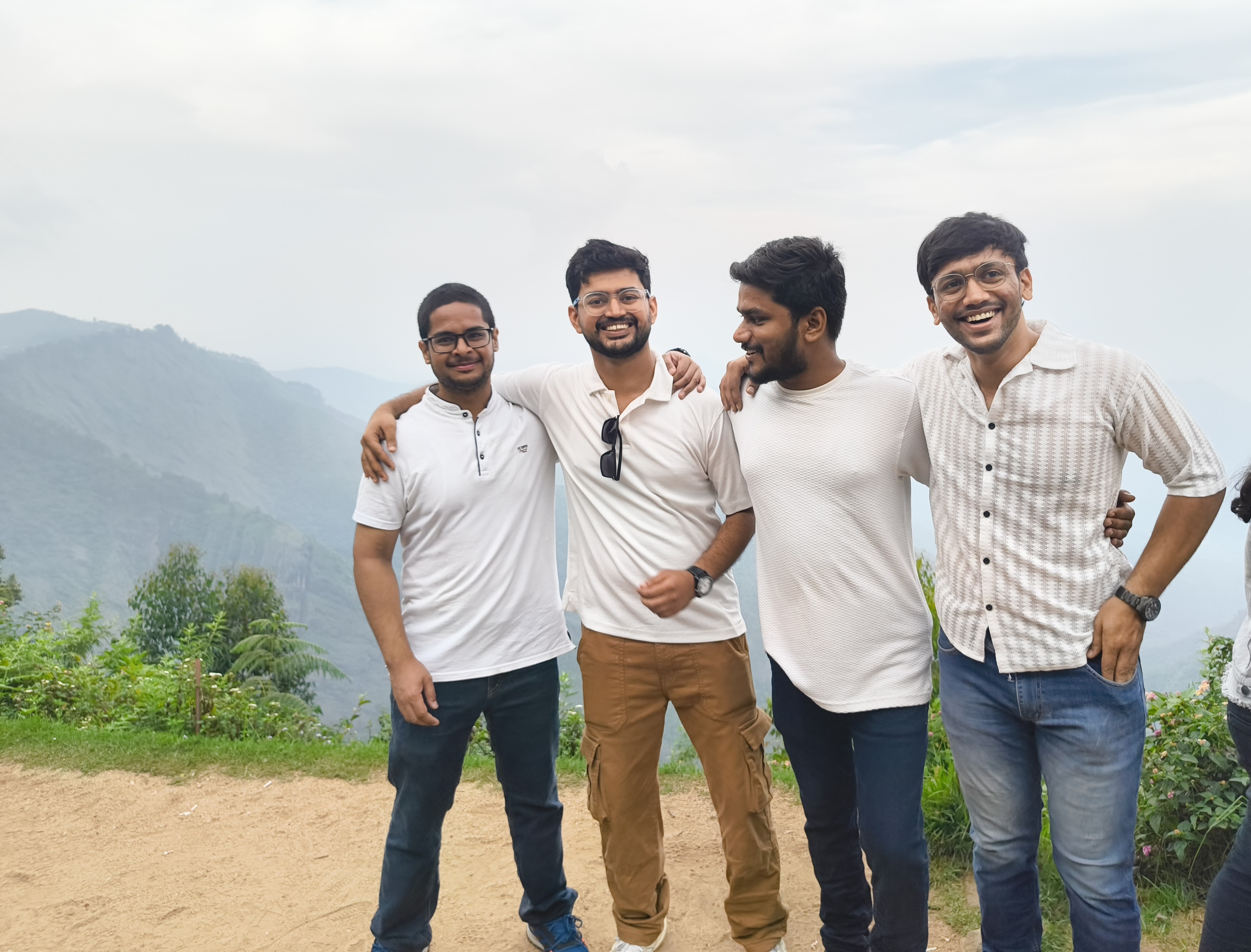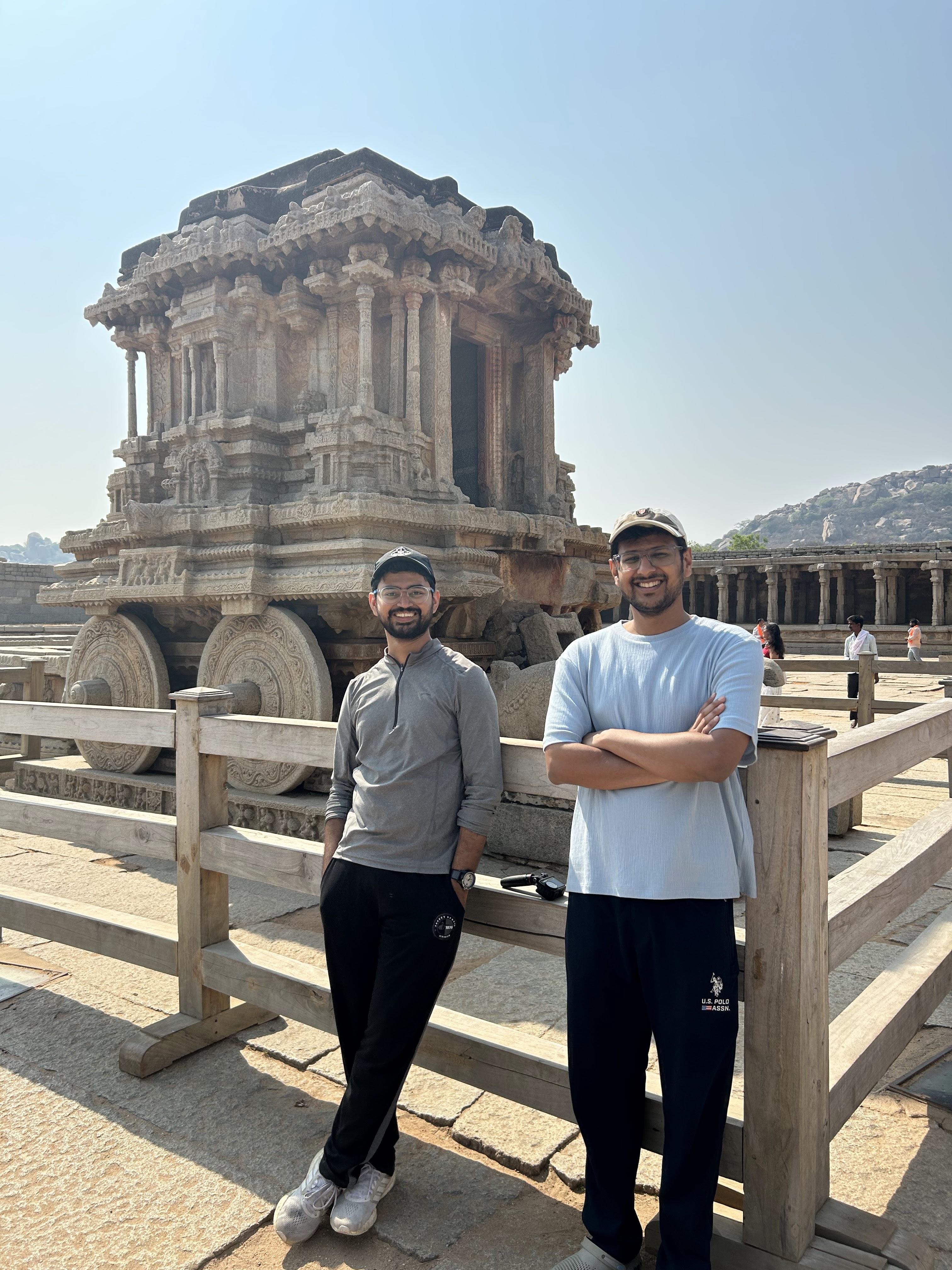A Day of Volunteering: Restoring a Forgotten Jain Temple I’m part of a Gyanoday Bachelors group on WhatsApp. It’s a great community in Bangalore that serves multiple purposes—finding Jain flatmates (mostly around the Gyanoday temple), sharing airport rides, organizing travel through the “Wanderers” subgroup, volunteering at temples, and generally helping young people stay connected.
Most of the group members live around the Gyanoday temple. Since the group is always buzzing with messages, I usually check in once a week, skimming through the 200–300 unread messages.
One day, an image caught my attention—it was a photo of a temple, but the entire poster was in Kannada, so I couldn’t understand it. Below the image was a caption that read, “Final reminder.” It linked to an older message in the group. I followed the link and found a detailed post.
It was about restoring an old Jain temple, which had become overgrown and forgotten due to lack of maintenance and absence of a Jain community in that town. The temple was in Anivalu, about 300 km from Bangalore. The organizers had arranged transport from Bangalore, and food was sponsored—but each participant would need to cover their own travel cost.
It sounded like a great cause. I didn’t have any plans for the weekend anyway, so I messaged the admin for more details. He replied promptly and shared the full itinerary. The plan was to leave from Karnataka Jain Association at 6 AM, reach Anivalu in about four hours, clean the temple for three hours, visit a few nearby temples, and return to Bangalore by sunset.
I asked if there was a seat available and confirmed my spot. I also checked if there was bike parking at the starting point since getting an auto at 4:30 AM would be difficult. Once all was sorted, I slept early to prepare for the next day.
The Next Morning I woke up at 4:30 AM. Karnataka Jain Association was about 15 km from my place, so I quickly got ready and left around 5 AM. It was still dark outside, and I had never been to this part of Bangalore before. But it felt nice—cool early morning breeze, empty roads, and I was humming some tunes while cruising.
When I reached, I saw around 20 people gathered at the entrance—mostly under 25, standing in small circles. I parked my bike and joined them. I had assumed that most people would be from Bundelkhand since the Gyanoday community has a strong presence from that region. But to my surprise, no one was from Bundelkhand. I tried to strike up a few conversations, but the language barrier kicked in—most were speaking Kannada.
I went inside the temple for darshan, but at the back of my mind, I was wondering if I’d made a mistake. I was hoping to meet some new people and have a fun experience, but everyone seemed to already know each other, and the language difference felt like a wall.
We were still waiting for the bus and for a few more people to join. The initial plan was to carry breakfast and eat en route, but due to delays, the plan changed—we would eat breakfast first and then leave.
Everyone washed up in the dharamshala next to the temple and lined up for breakfast—idli and bisibelebath. While eating, I noticed a guy who also wasn’t mingling with the others. He seemed older—maybe 5 to 8 years senior to me. I figured he was probably not from Karnataka either.
We ended up having breakfast together and started chatting. He was from North India and had spent most of his life abroad. He studied at UC Berkeley and worked outside India for several years before returning. It was refreshing to see someone so humble and community-minded despite his international background.
On the Road After breakfast and tea, we boarded the bus. It was a 50-seater, but only about 35–40 seats were occupied. We left around 7:30 AM. Honestly, I was sure we wouldn’t be back by sunset.
The city roads were bumpy, so I waited for us to hit the highway before trying to nap. I dozed off for 1–2 hours until we took a break. Some folks who missed breakfast ate, while others stretched their legs. I stayed near the bus.
Nearby, a group of guys in their early 20s were joking around. One of them asked if I was with someone, and I replied, “Nope, I came alone.” We started talking. Turned out they were regulars from the Gyanoday Abhishek group and visited the temple daily. Two were from Karnataka, two from the North. One guy, Akkole ji, was from Sadalga, the hometown of our guru Acharya Shri Ji.
While others finished eating, we crossed the road for tea. Watching biker groups zoom past on the Mangalore highway reminded me of my own bike trips.
Back on the bus, I sat with these new friends. One of them, also named Paras Jain, worked at Netradyne and had studied at IIT BHU. Every year, they organize a sponsored Shikharji trip for around 150 Jain juniors from his college. We even chatted a bit about work—coding, database optimization, and the usual tech stuff. Time flew, and we reached Anivalu around 12:30 PM.
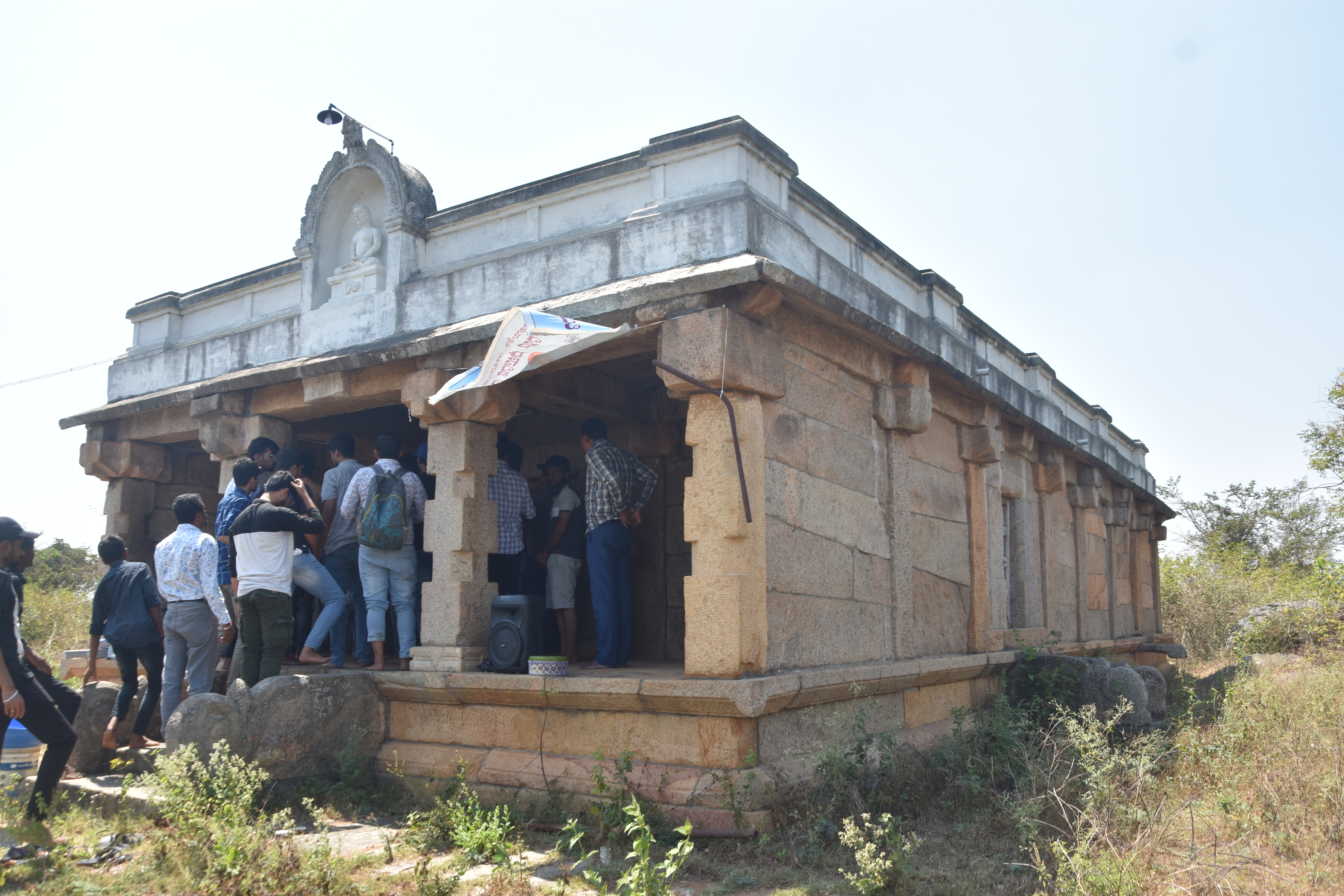
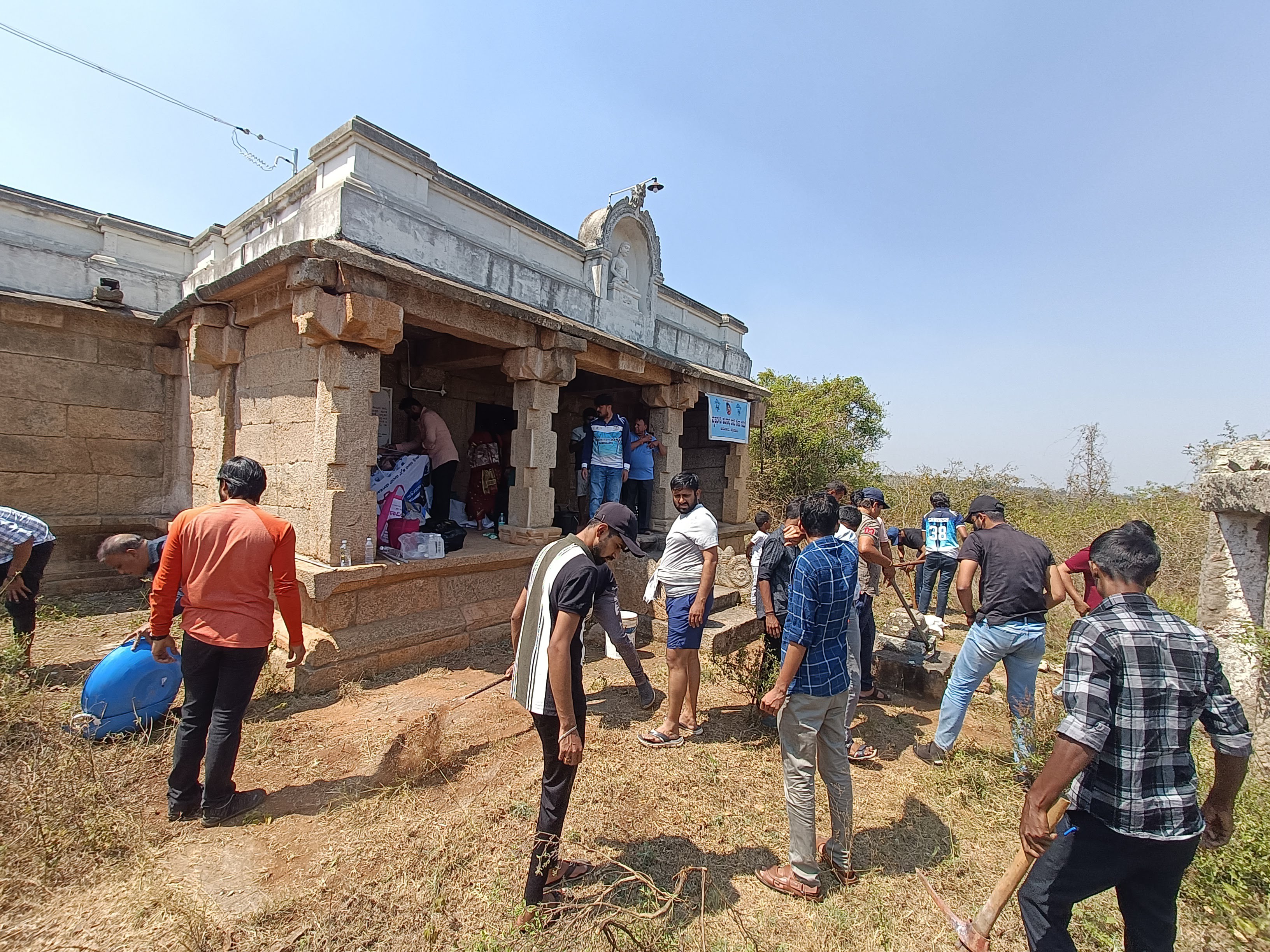
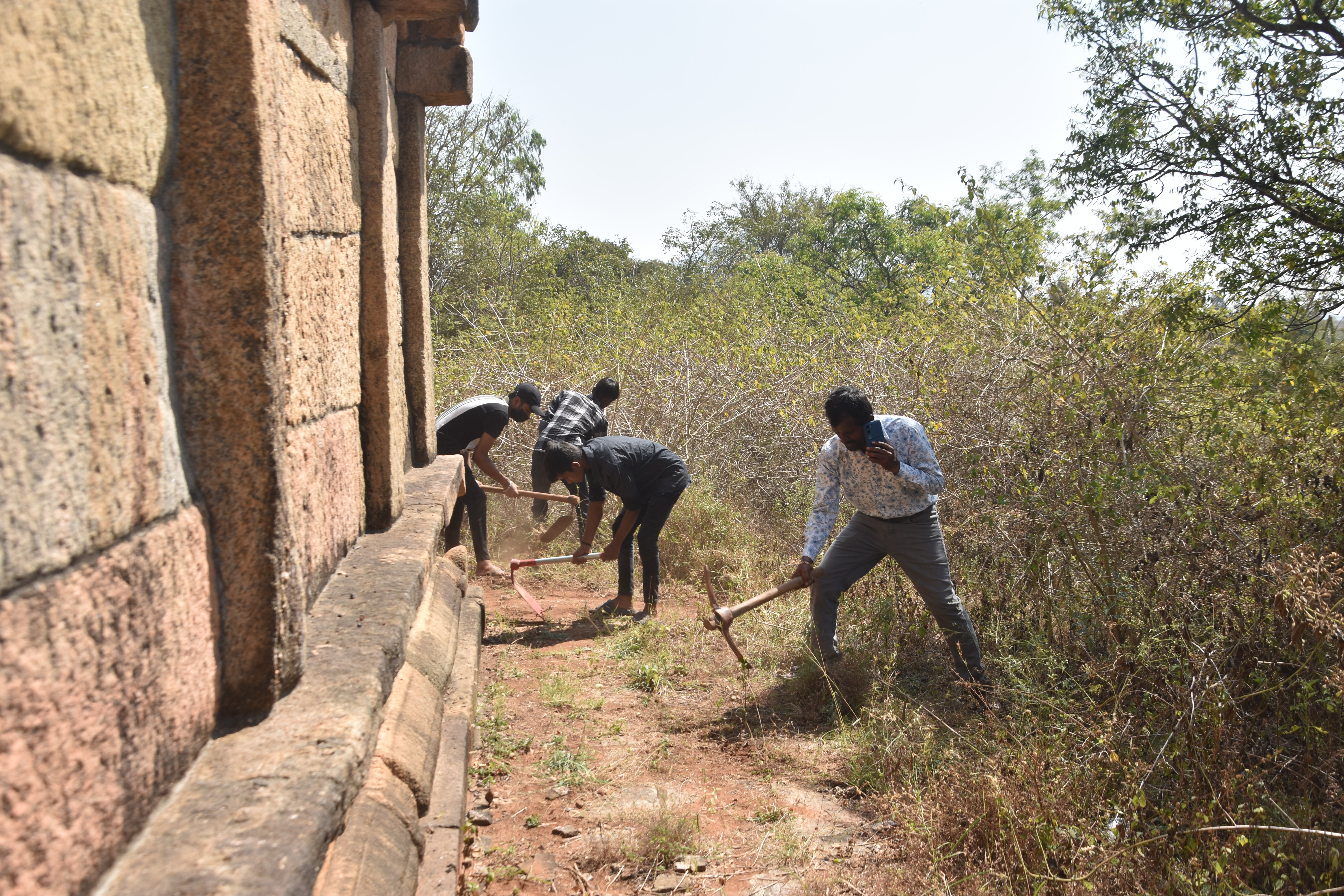
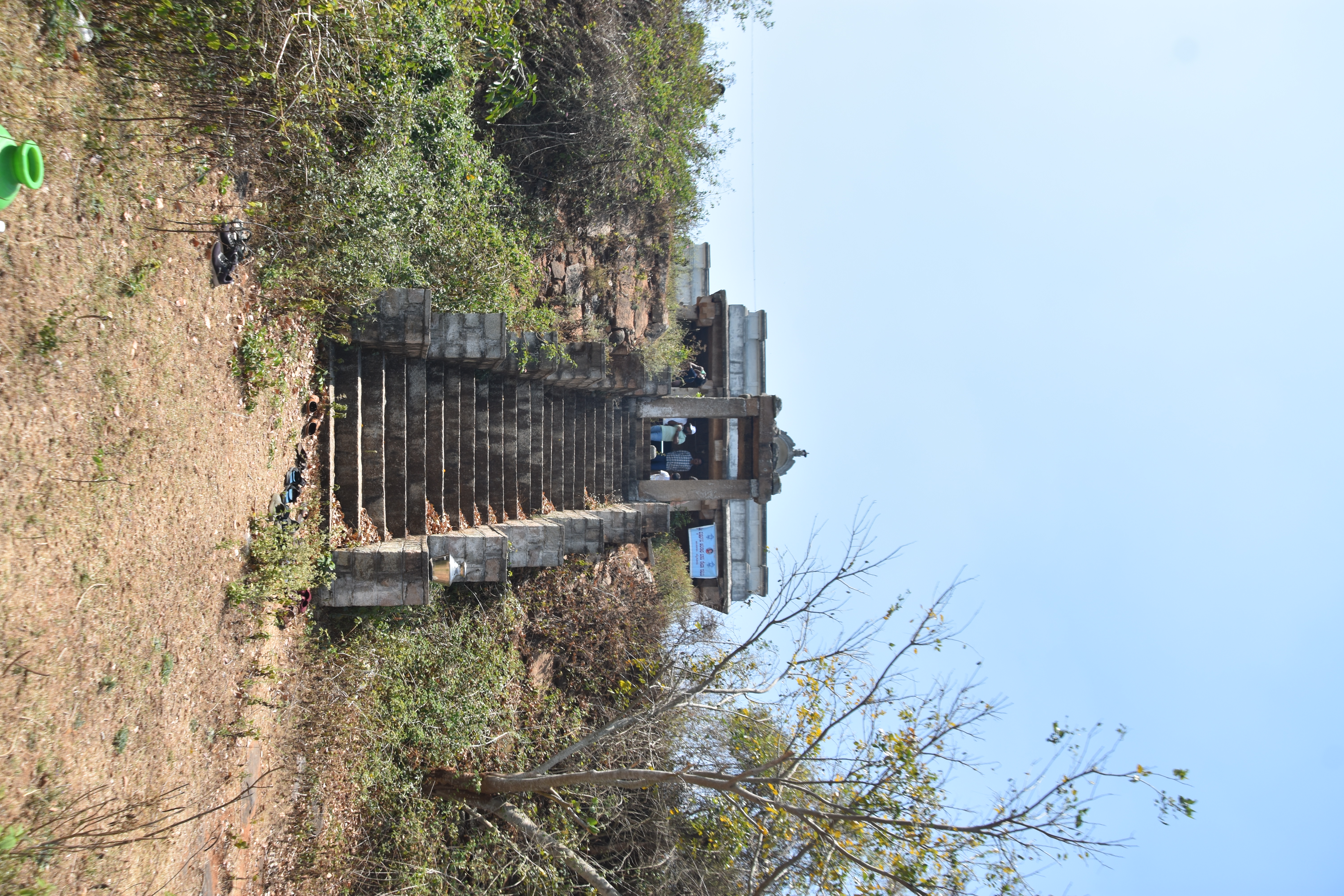
The Restoration Begins The local Jain community welcomed us warmly. We washed our hands and climbed about 30 steps to the temple. At first glance, it was clear the temple hadn’t been maintained in years—bushes everywhere, layers of dust.
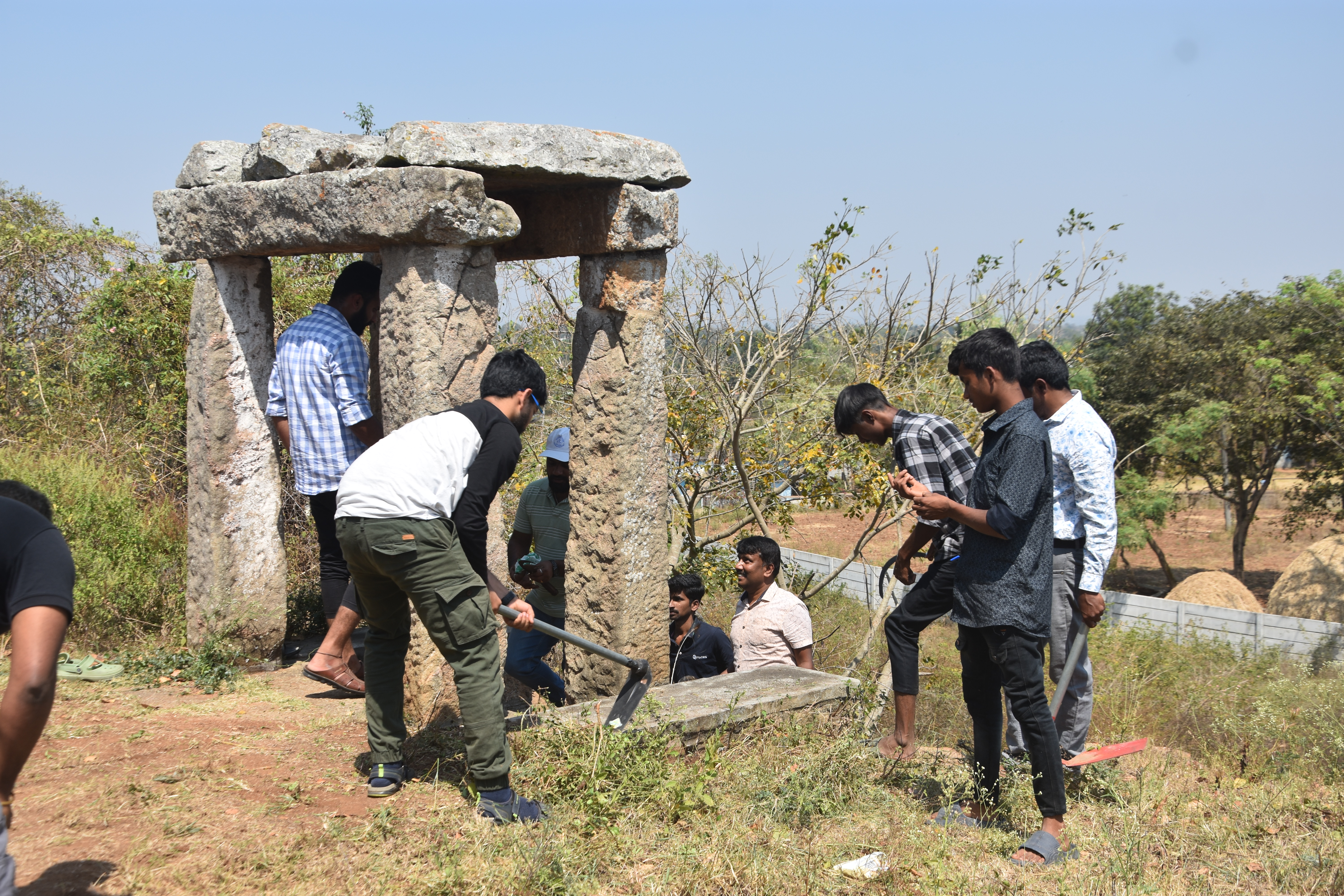
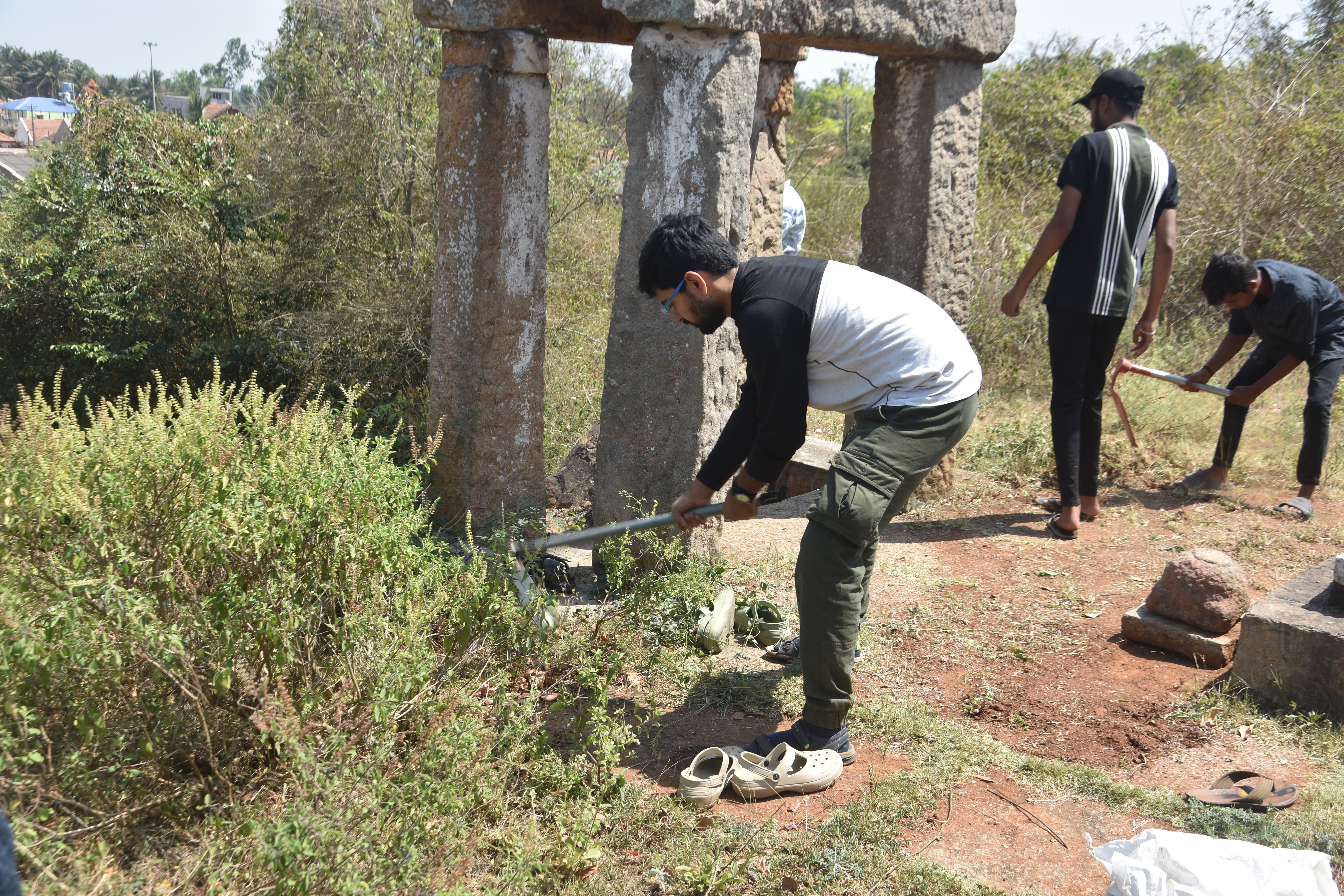
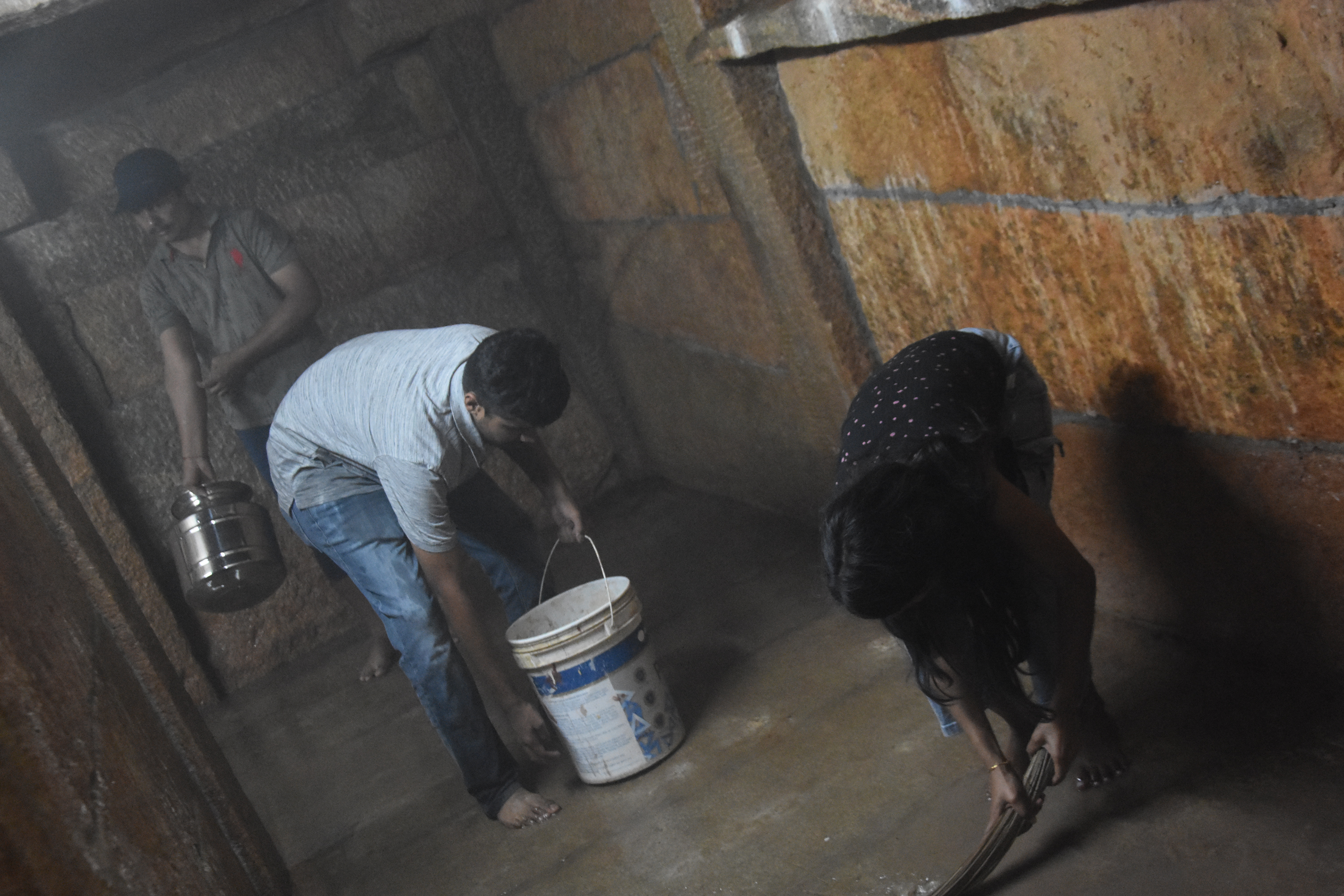
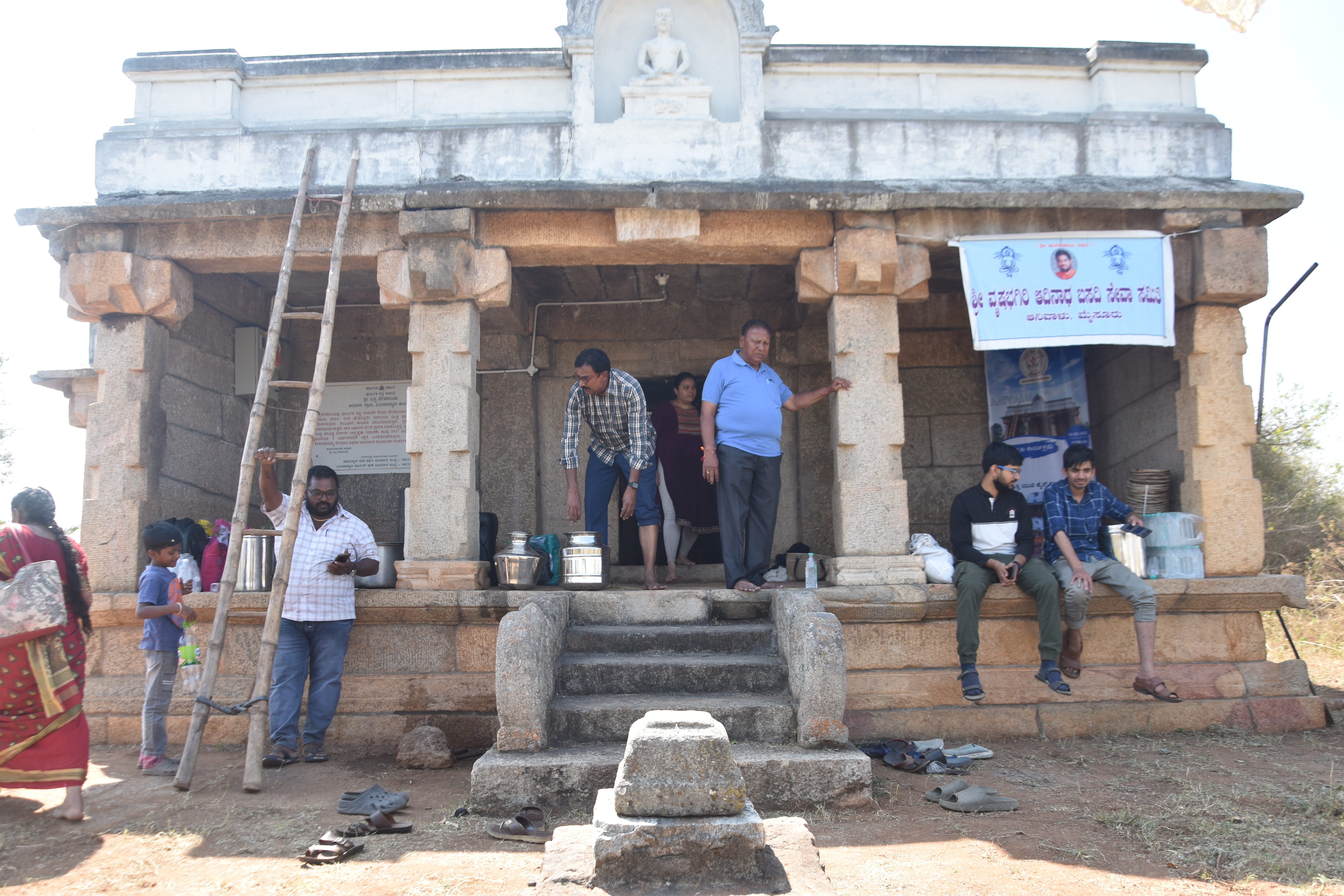

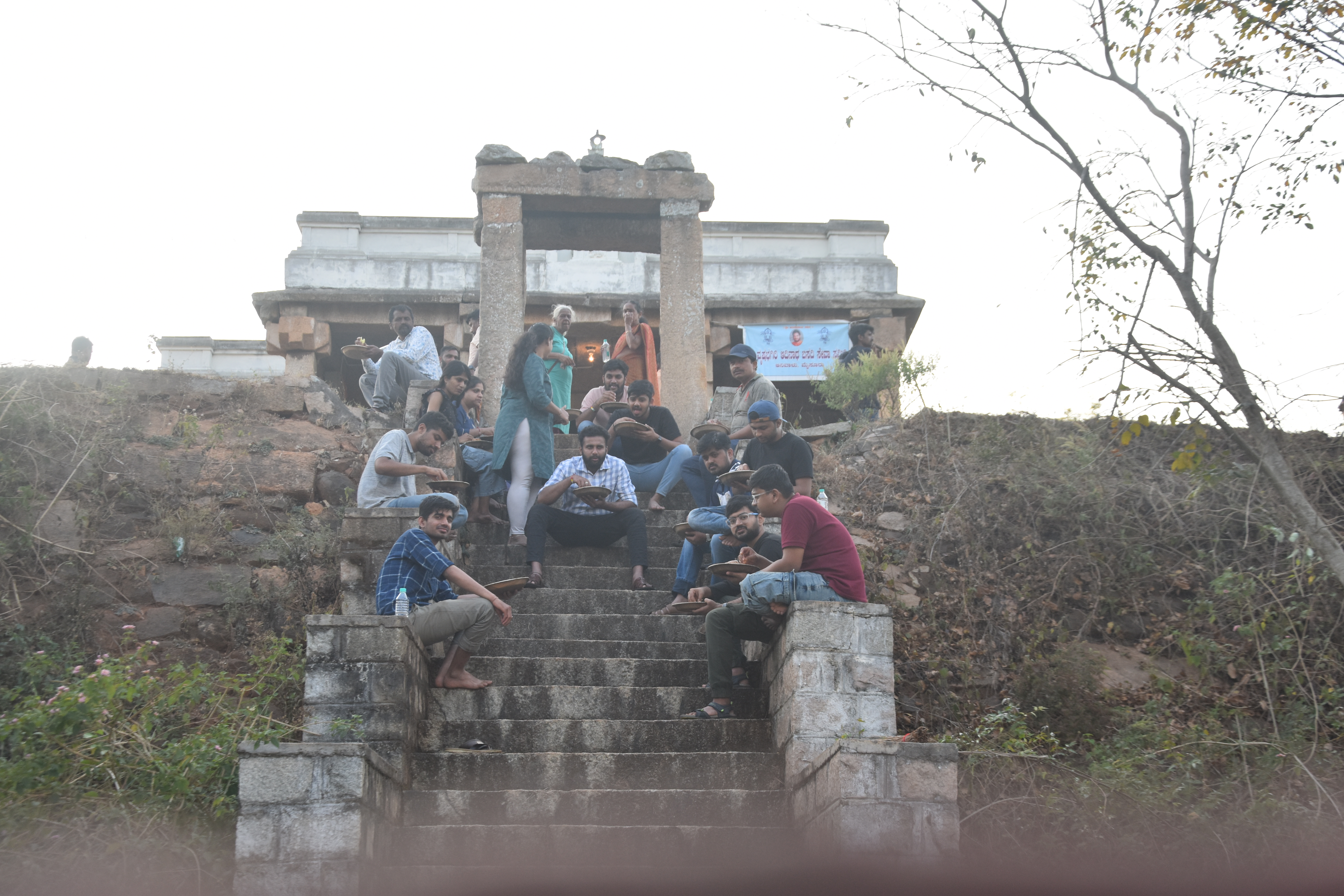
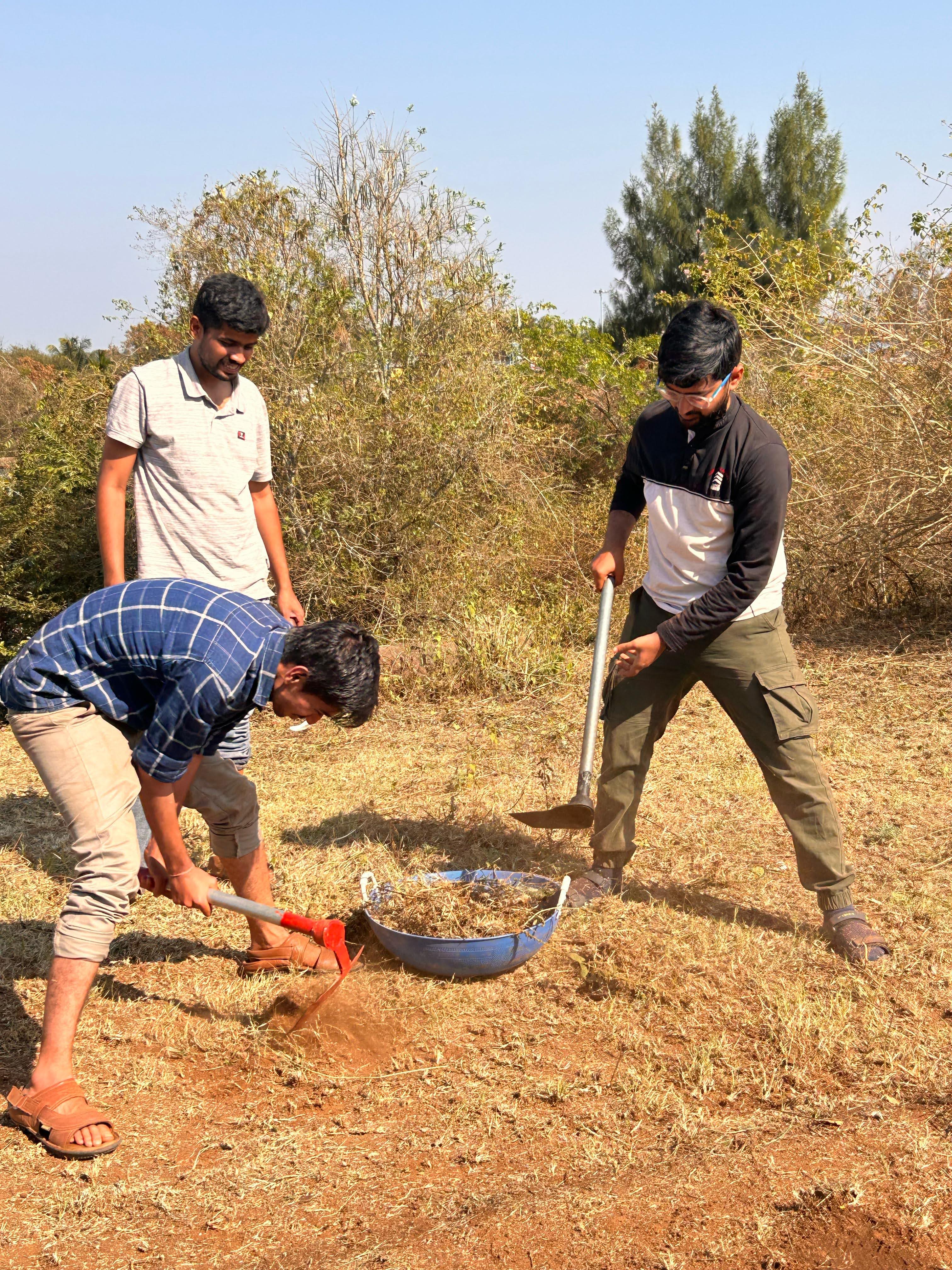
Coincidentally, the temple got its electricity connection that very day. After the meter was inaugurated, we did darshan.
We unloaded our cleaning tools—axes, sickles, shears, brooms, shovels, rakes, wheelbarrows, buckets, trash bags, pickaxes, and more.
People split into teams—some started cleaning the inside, and I joined the group working outside.
Though untrained, we went all in—cutting grass, clearing thorns, removing trash. I was sweating like crazy, but it felt good doing something for the community.
Some removed huge thorny bushes; others cleared years of dust from the ground. A few climbed up to clean the temple roof.
After an hour or so, we could finally see the stone floor around the temple—about 2 meters wide for parikrama. It was satisfying to uncover it after all the cleaning.
We paused for snacks—buttermilk, water, and some namkeen.
Inside, a small group was scrubbing floors and walls with soap and water. Later, someone arranged a petrol-powered grass cutter, which sped up the work.
We gathered all the trash and started burning it. I sat with my new friends again and we chatted about random things. Some elderly people were sitting nearby too.
One old lady came up and thanked us. Then she said something in Kannada I couldn’t understand. My friends translated—she wanted some utensils. I handed them over. When they told her I was from the North and didn’t know Kannada, her expression changed.
She frowned, visibly disappointed. She told us we should learn Kannada if we’re living in Karnataka. Another uncle joined in and echoed the same. I smiled and nodded, saying, “Yes uncle, I’ll learn.”
But in my head, I was thinking, I’m not even staying here long-term… and even if I were, why is learning Kannada a requirement?
That interaction left a bitter taste. It didn’t matter that I came from afar and was helping restore their temple—they were more bothered about the language I spoke. For a second, I wondered if it was even worth it. But I shook off those thoughts and reminded myself to stay in the moment.

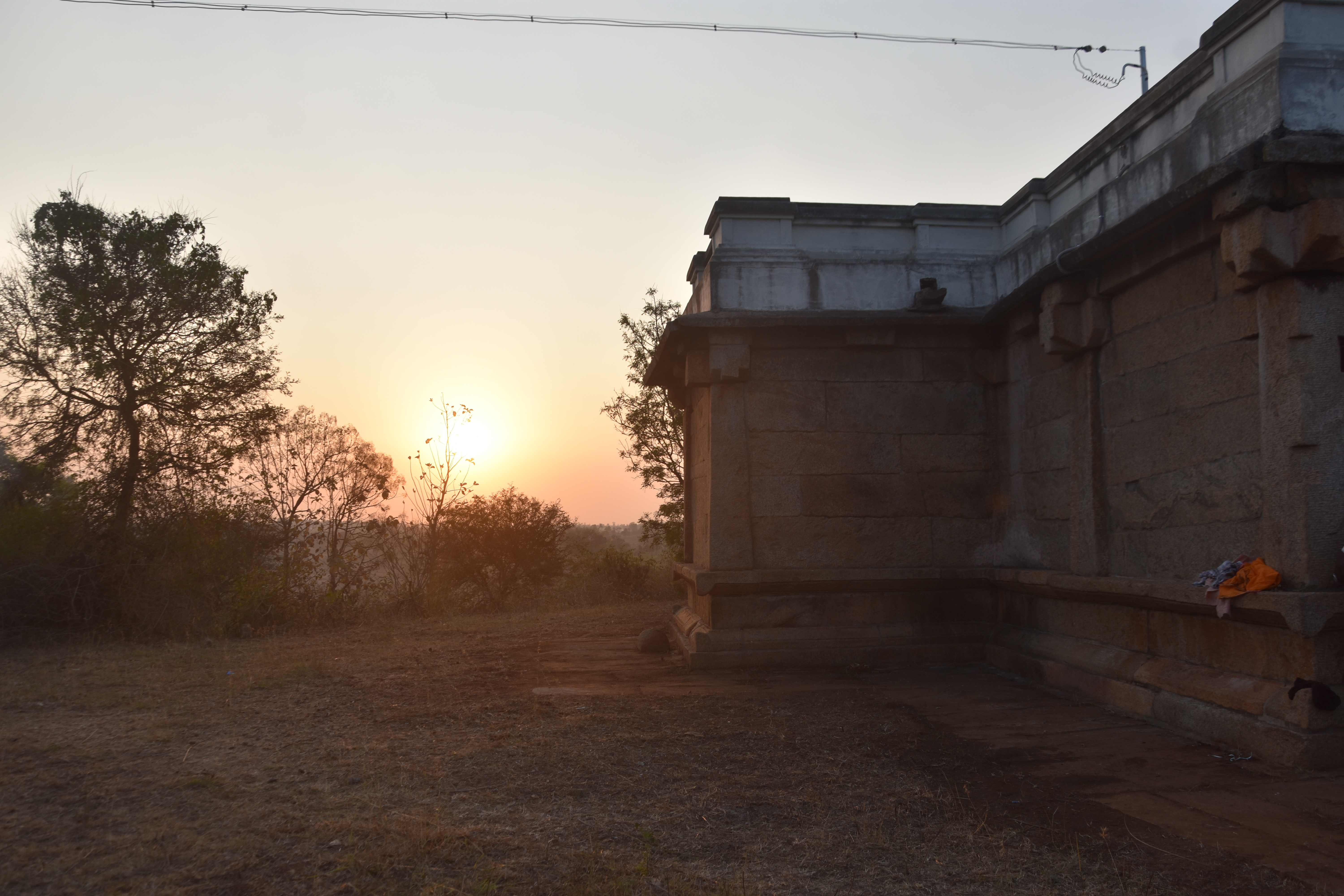
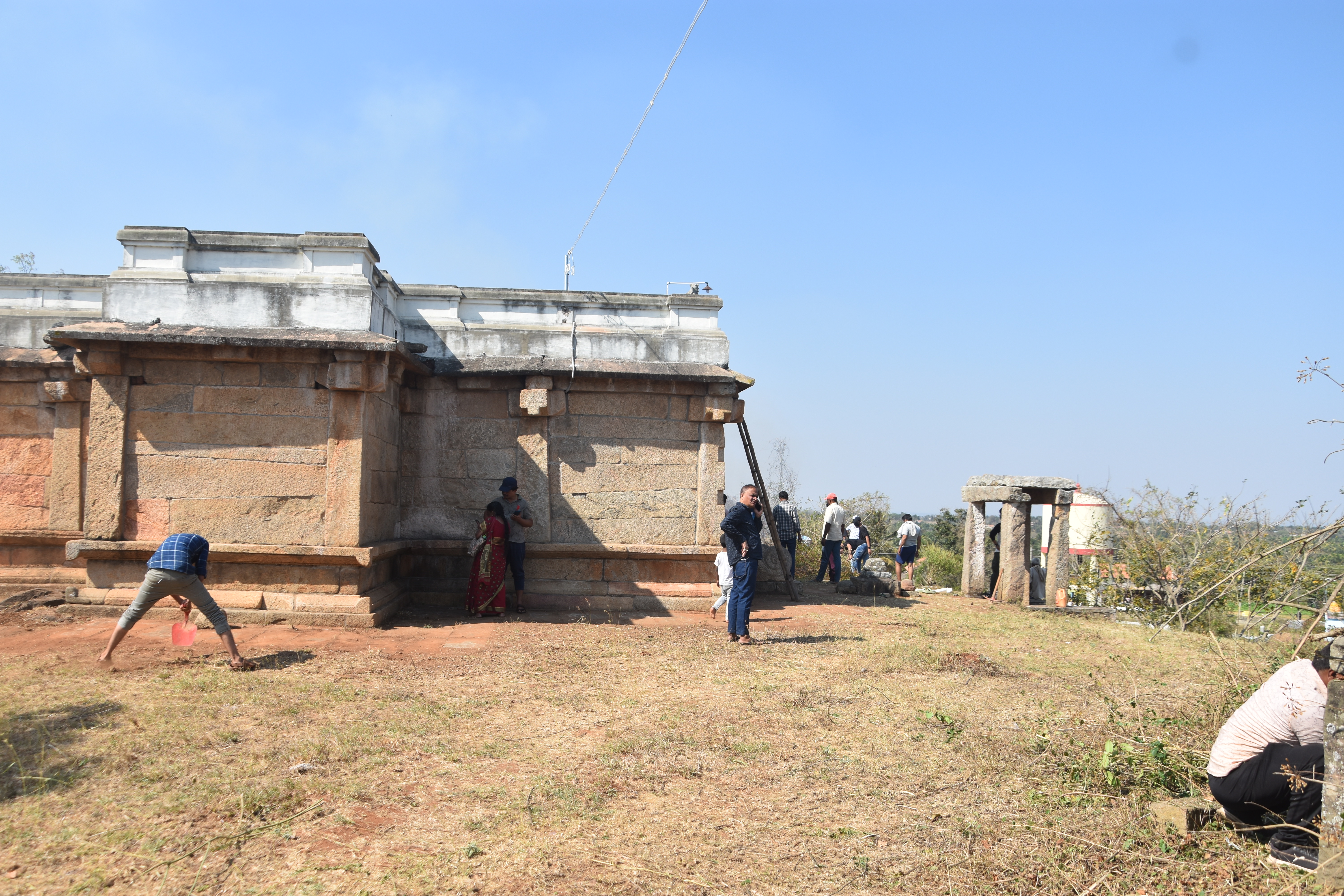
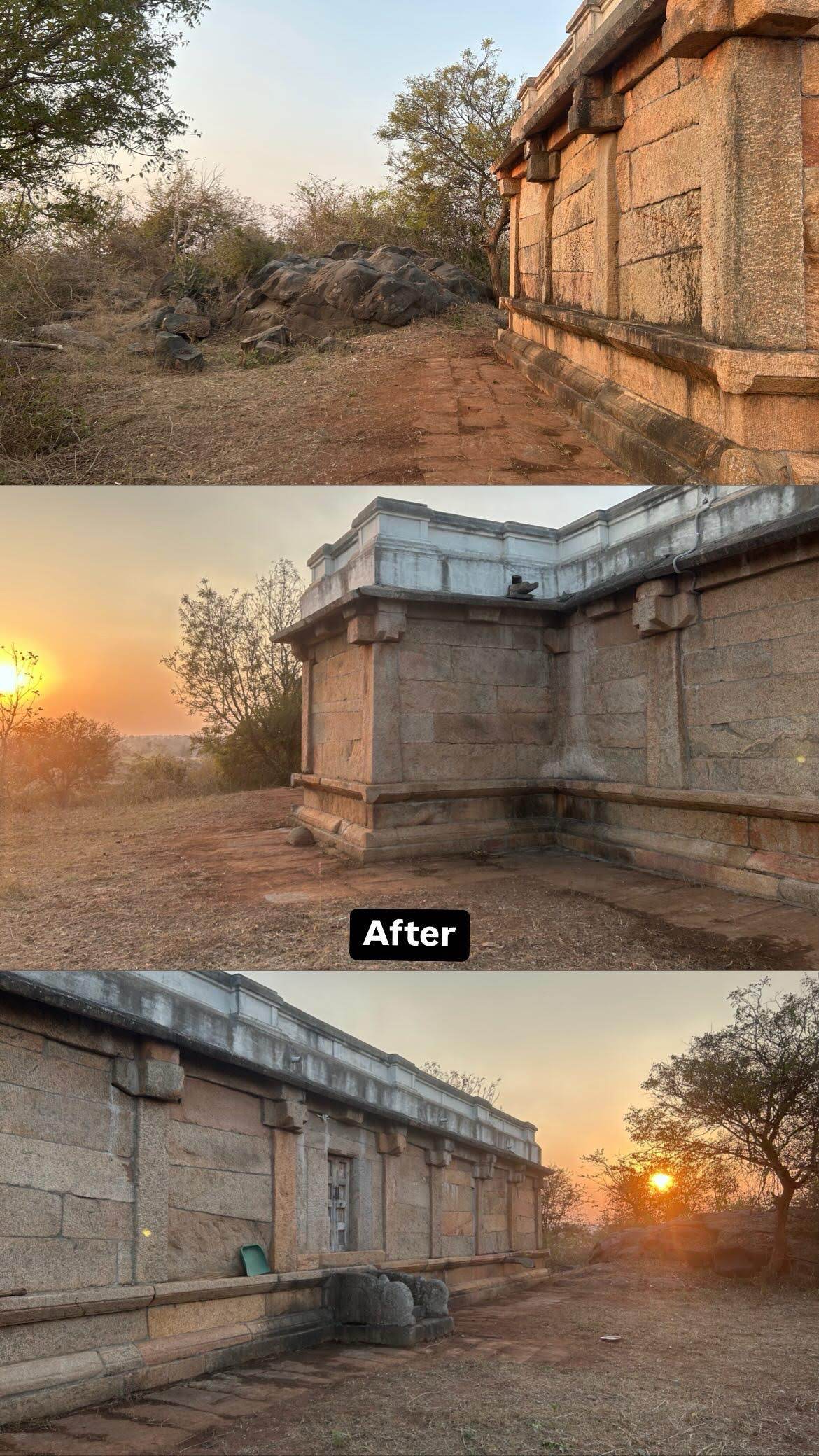
A Job Well Done After three hours of hard work, the temple looked beautiful. Cleaned inside and out, with all the bushes gone, it felt like we had brought something back to life.
We took some group pictures and then had lunch—bisibelebath, curd, chips, and pickle. Maybe the food was genuinely delicious, or maybe we were just famished from the effort. Either way, it hit the spot.
We went inside for darshan and pooja. The temple looked divine. The pooja was led by the local priest, and afterward, the community members gave a heartfelt thank-you speech.
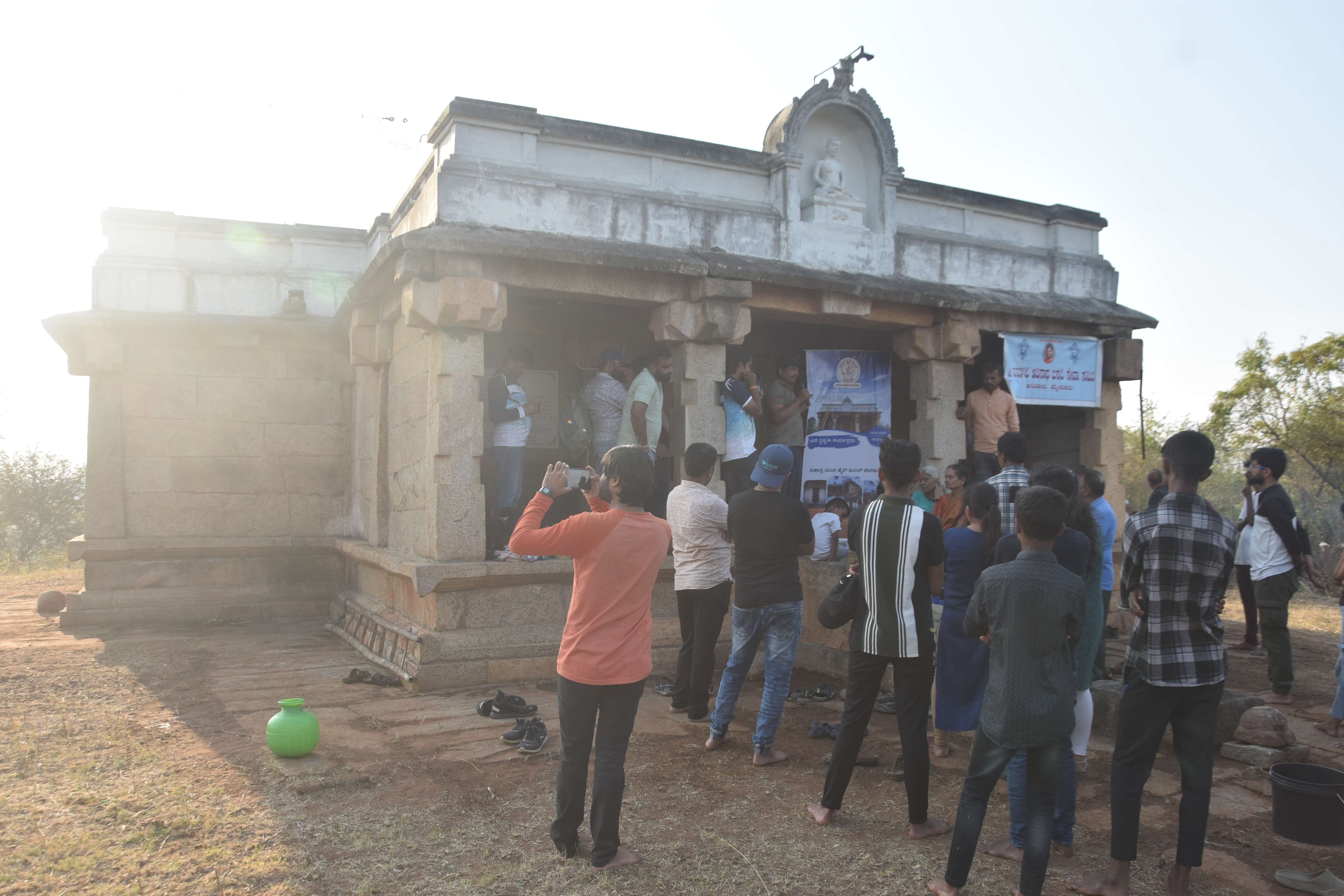
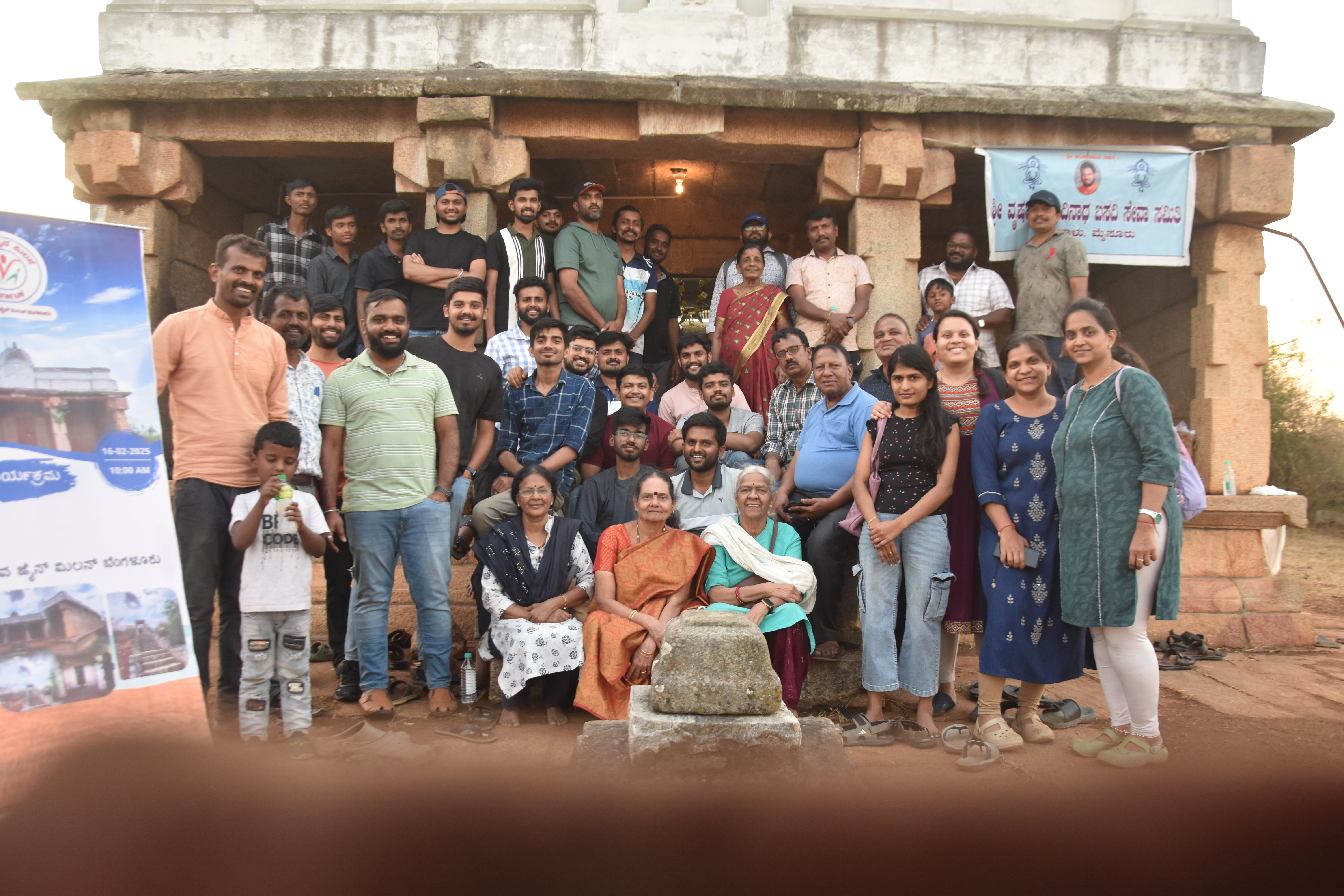
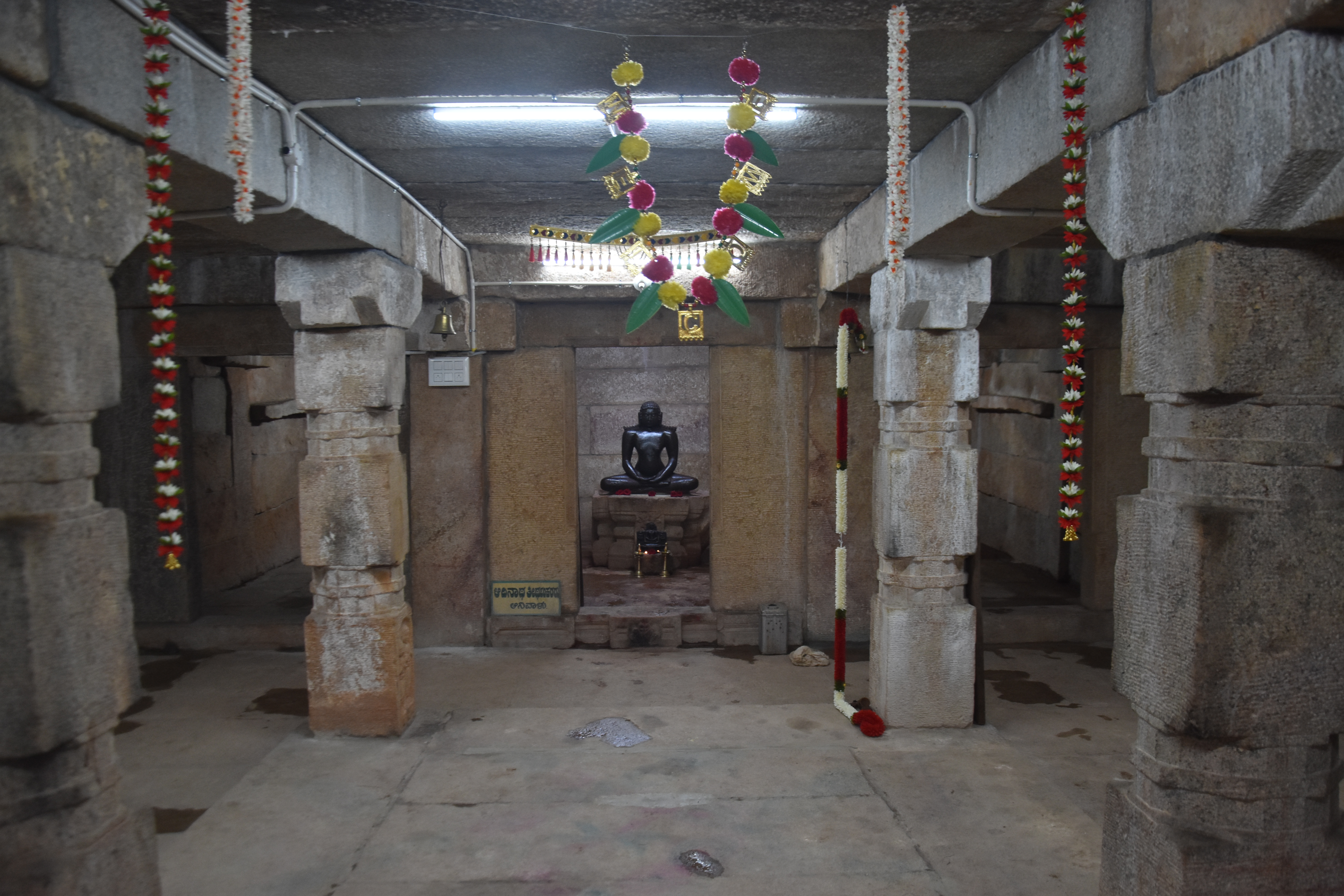
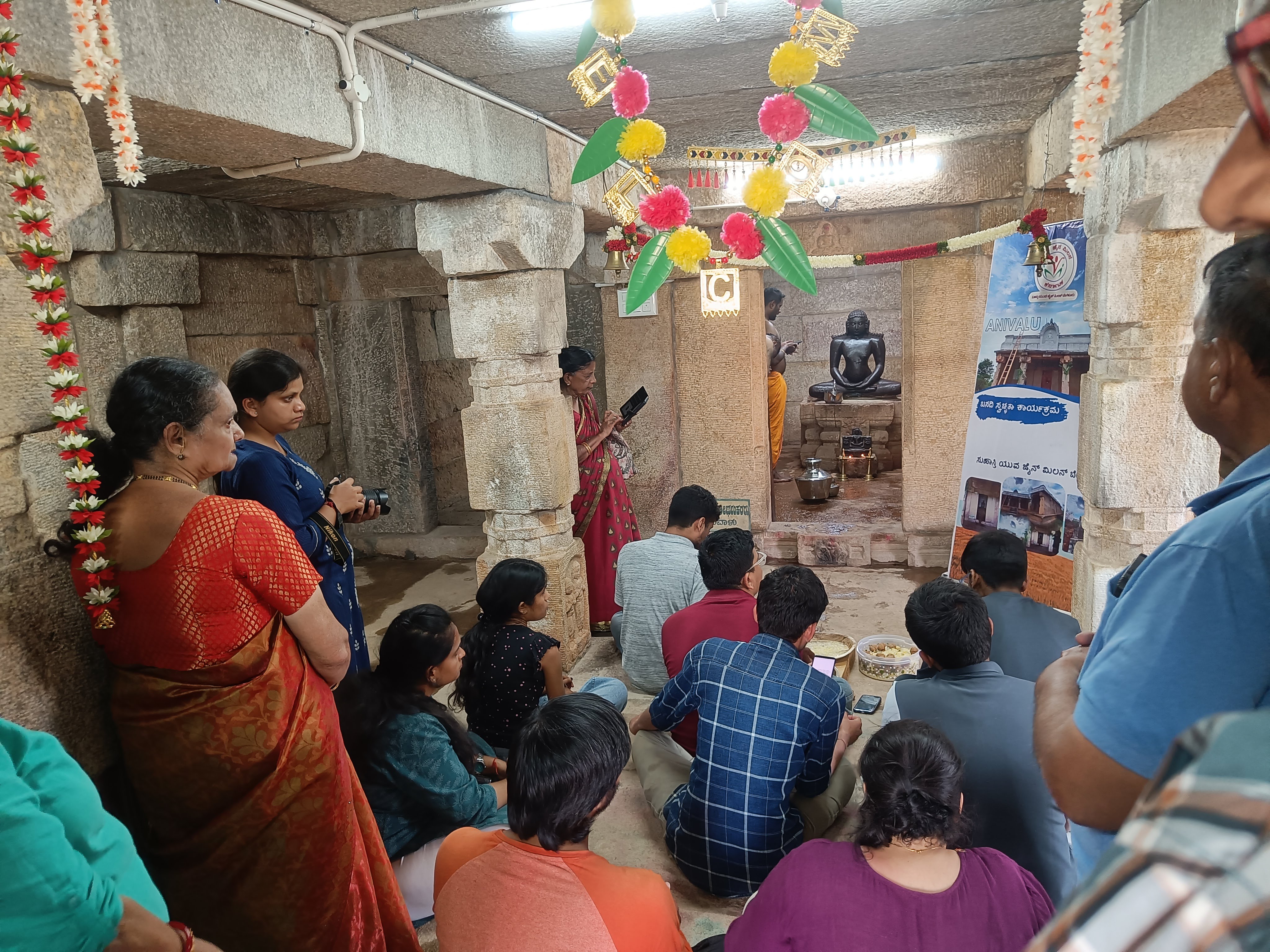
In By now it was 5 PM, and we headed to our next stop—a Jain temple in Chikka Hanasoge, about 30 minutes away. From there, we visited several more temples in Saligrama. Saligrama, we were invited to the home of the family that sponsored our food. They welcomed us warmly and served tea and snacks. We spent some time chatting before heading back to Bangalore around 8 PM.
Reflections It was a good day. I made some new friends, had meaningful conversations, and contributed to something worthwhile.
Once we returned to Bangalore, everyone grabbed their bikes and headed home.
Despite the language gaps and awkward moments, I left with a sense of purpose—and a deeper connection to my community.
